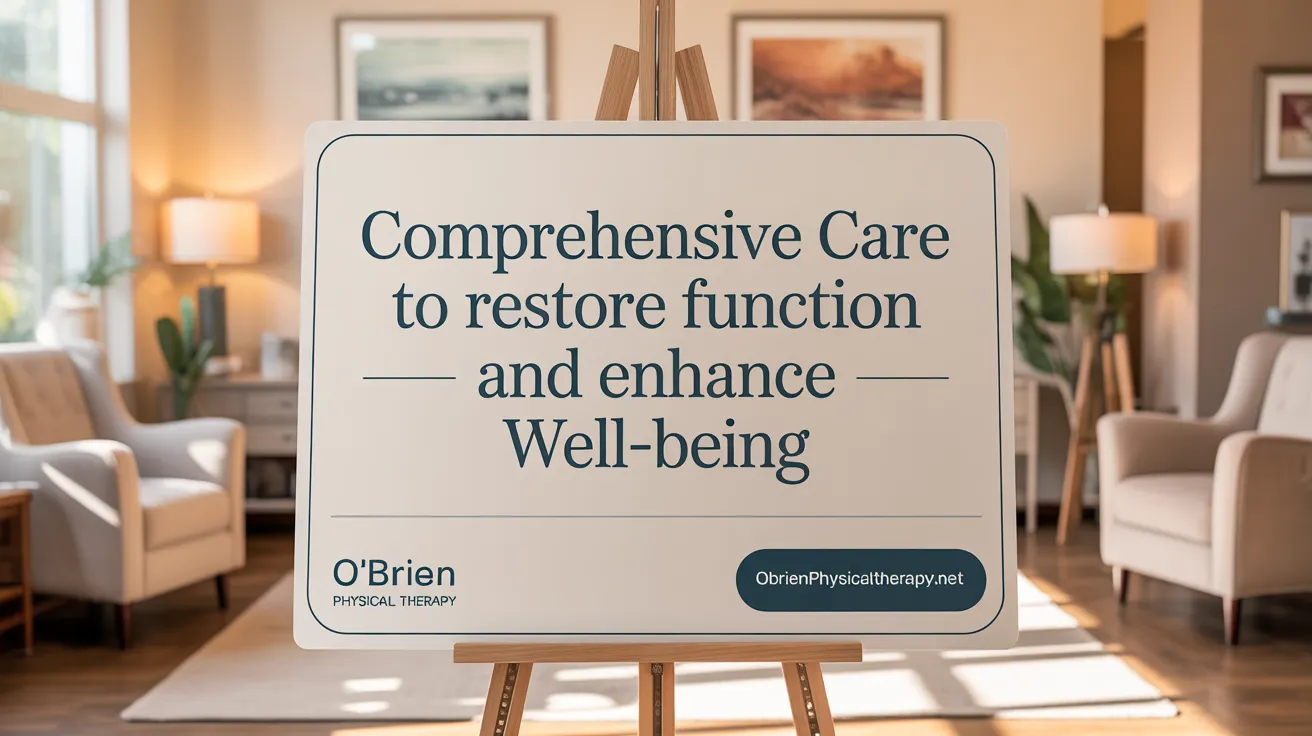Challenging Common Assumptions About Physical Therapy
Physical therapy (PT) is widely recognized as a key healthcare profession that aids recovery and improves quality of life. Yet, numerous myths and misconceptions persist, clouding public understanding of what PT truly entails. This article sets out to clarify these misunderstandings, debunk popular myths, and provide an evidence-based perspective on the role and benefits of physical therapy.
What Physical Therapy Really Involves: Beyond Massage and Pain Relief

What does physical therapy involve?
Physical therapy encompasses a thorough process of evaluation, diagnosis, and treatment to address various physical issues, conditions, and disabilities. It is more than just massage or pain relief; it employs a broad array of modalities that promote healing and restore function.
Therapists use techniques such as heat, cold, electrical stimulation, ultrasound, and light therapy to reduce inflammation and enhance tissue recovery. These modalities are tailored to each individual’s needs and specific condition.
A core part of physical therapy is the use of therapeutic exercises. These can include passive movements performed by the therapist or active movements guided by the patient. The goal is to rebuild strength, improve flexibility, increase mobility, and restore function.
Manual therapy techniques are also vital. Therapists may perform joint mobilizations, soft tissue massage, and manual therapy to decrease pain, improve joint and soft tissue mobility, and address specific restrictions.
Most treatment plans are personalized, designed after detailed assessments to target each patient’s unique issues. Whether focusing on recovering from an injury, managing a chronic condition, or preventing future problems, physical therapy’s comprehensive approach is fundamental.
Importantly, patient active participation is encouraged. Patients often perform prescribed exercises at home, ensuring ongoing progress and long-term benefits. Physical therapy aims to empower individuals to regain independence in daily activities.
The range of conditions treated through physical therapy is extensive. It includes musculoskeletal problems like arthritis, tendonitis, and sports injuries, as well as neurological issues such as stroke recovery and balance disorders. Additionally, it can help manage chronic pain, improve posture, and prevent falls, especially in aging populations.
In summary, physical therapy offers a multifaceted approach that promotes healing, enhances mobility, reduces pain, and improves overall well-being, emphasizing active engagement and tailored care to meet individual needs.
Debunking Myths: The Truth About Pain, Referrals, and Patient Roles in Physical Therapy

What are common myths and facts about physical therapy?
Many misconceptions surround physical therapy, from beliefs that it can only help after surgery to the idea that it must be painful to be effective. In truth, physical therapy (PT) is a comprehensive, evidence-based practice aimed at reducing pain, improving mobility, and preventing future health issues.
Contrary to popular belief, most people do not need a referral to see a physical therapist. In many states, including Illinois and Wisconsin, direct access allows patients to consult a PT without prior physician approval, enabling quicker start to treatment.
A common myth is that physical therapy involves intense, painful exercises. Actually, PT is tailored to each patient's comfort level. Therapists work within the patient's pain threshold, gradually increasing intensity to promote recovery without causing unnecessary discomfort.
PT is not just for recovery from surgery or injury. It also effectively addresses chronic conditions such as arthritis, headaches, and balance problems, and is useful for long-term health management.
While some assume physical therapy is a quick fix, the process often takes weeks or months, emphasizing gradual improvement, ongoing exercises, and lifestyle adjustments for sustained health benefits.
In summary, physical therapy is a safe, adaptable, and scientifically supported approach led by licensed professionals, helping people of all ages regain function, reduce pain, and improve overall quality of life.
Scientific Foundations and Professional Expertise: Ensuring Quality Care in Physical Therapy

Is physical therapy scientifically proven and evidence-based?
Physical therapy (PT) is firmly rooted in scientific research and proven methodologies. It utilizes core principles from biomechanics, kinesiology, neuroplasticity, and tissue healing to assess and treat a range of health conditions. Interventions are evidence-based, including manual therapy, targeted exercises, and modalities such as heat, cold, electrical stimulation, and ultrasound.
Numerous peer-reviewed studies demonstrate that physical therapy effectively reduces pain, improves mobility, and restores function. It plays a crucial role in minimizing reliance on medications and avoiding invasive procedures like surgery.
While individual practitioner adherence to research guidelines can vary, the overall body of scientific evidence supports PT as a safe, effective, and professional healthcare discipline. This ongoing research-driven approach continually refines treatments, ensuring patients receive the most current and effective care.
What are some common stereotypes about physical therapists?
Despite their expertise, physical therapists are often misunderstood. Common myths include the idea that they mainly work with athletes or only provide massage therapies. People may think their work is limited to simple pain relief or basic mobility exercises.
Another misconception is that physical therapy involves passive treatments—like massages—rather than active patient participation. Also, many believe PT is only for acute injuries, overlooking their vital role in managing chronic conditions, neurological disorders, pediatric issues, and as a surgical alternative.
In reality, physical therapists are highly trained movement specialists. They have comprehensive education, often earning doctoral degrees, and work across diverse healthcare settings. Their focus extends far beyond passive care, emphasizing active rehabilitation, patient education, and the promotion of healthy lifestyle habits.
How is the education and licensing of physical therapists designed to ensure quality?
Licensed physical therapists (PTs) are among the most extensively trained healthcare professionals. They typically complete a rigorous three-year postgraduate program culminating in a Doctor of Physical Therapy (DPT) degree. This education includes coursework in anatomy, physiology, pharmacology, pathology, and evidence-based clinical practice.
To practice legally, PTs must pass a comprehensive national licensing exam that tests their knowledge, skills, and clinical judgment. Many also hold additional certifications in specialized areas like orthopedics, neurology, and sports medicine.
Ongoing professional development is essential, with PTs participating in continuing education throughout their careers. This ensures they stay current with the latest research, techniques, and standards, maintaining high-quality, safe, and effective care.
How does physical therapy compare to surgery and medication?
Studies have shown that for many conditions, including degenerative disk disease, spinal stenosis, rotator cuff tears, and some forms of knee osteoarthritis, physical therapy can be as effective as, or even more effective than, surgery.
Physical therapy often offers a safer alternative by avoiding the risks associated with invasive procedures. It can help reduce or delay the need for surgery, especially when intervention occurs early.
Additionally, PT can lower healthcare costs significantly—patients may save up to 60% on medical bills for common ailments when they seek therapy before considering surgery or medications.
The conservative approach of physical therapy promotes healing, restores function, and minimizes side effects from drugs, making it a preferred initial or adjunct treatment for many conditions.
| Aspect | Traditional Approach | Physical Therapy Approach | Additional Details |
|---|---|---|---|
| Primary Focus | Surgery or medication | Non-invasive, conservative management | Often used together for comprehensive care |
| Risks | Surgical complications, medication side effects | Very low, mainly related to exercise tolerance | Focus on safety and gradual progression |
| Cost | Generally higher due to procedures and medication | Cost-effective, reduces overall healthcare expenses | Evidence supports long-term savings |
| Effectiveness | Variable; sometimes invasive methods required | Often comparable or superior for many conditions | Supported by extensive research |
Physical therapy exemplifies a scientifically grounded, professional, and effective healthcare strategy, emphasizing active patient engagement and evidence-based interventions to optimize health outcomes.
Recognizing Red Flags and Improving Access: Safety and Inclusivity in Physical Therapy

What are red flags in physical therapy that require physician referral?
Red flags are warning signs that suggest a second opinion or urgent medical evaluation is necessary before starting or continuing physical therapy. These signs point to potentially serious health conditions such as infections, cancer, vascular issues, or neurological emergencies. Recognizing these symptoms helps physical therapists identify when patient care should involve additional medical assessment.
Common red flags include unexplained weight loss, night pain, recent significant trauma, a history of cancer, and severe neurological signs such as weakness, numbness, or gait disturbances. Systemic symptoms like fever, chills, or malaise may also indicate infections or systemic illnesses. Vascular signs, like sudden severe pain, could suggest vascular emergencies, such as an aneurysm or deep vein thrombosis.
While red flags are crucial indicators, they do not on their own diagnose or exclude serious pathology. Instead, they serve as vital prompts for careful clinical evaluation. When identified, these symptoms lead to appropriate diagnostic tests and timely referrals, which can prevent severe complications and improve patient safety.
The goal is to use red flags within a comprehensive clinical reasoning framework, enabling physical therapists to differentiate benign conditions from those requiring urgent medical attention. Proper recognition enhances clinical decision-making and safeguards patient health.
What is a major issue affecting accessibility in physical therapy?
Access to physical therapy remains a significant challenge due to various social, economic, and health-related barriers. These obstacles can prevent many individuals from receiving the care they need in a timely manner.
Transport difficulties, insurance restrictions, and high costs can discourage or prevent patients from attending in-person sessions. Additionally, safety concerns, fatigue, chronic pain, or mobility limitations may make travel or clinic visits difficult. These barriers disproportionately affect vulnerable populations, including seniors, rural residents, and low-income groups.
Innovative solutions aim to bridge these gaps. Telehealth services provide remote consultations, assessments, and guided exercises, reducing the need for travel and increasing convenience. At-home PT tools, such as digital exercise programs or wearable sensors, offer patients ongoing support outside clinical settings.
Legal measures, like direct access laws, significantly enhance care accessibility. In many states, patients can see a physical therapist without a referral, fast-tracking treatment initiation and reducing delays.
Efforts to improve affordability, through insurance coverage expansion and policy reforms, are vital to making physical therapy accessible to more people. Combining technological advances with policy changes helps ensure equitable access for all individuals seeking to improve their mobility, manage pain, or prevent injuries.
The Paradox and Potential of Physical Therapy: Enhancing Function While Embracing Diversity
What is the paradox of physical therapy?
The paradox of physical therapy lies in its dual aims to help individuals improve their physical function while also respecting and valuing their disabilities as part of human diversity. Traditionally, the focus of treatment was solely on reducing impairments and restoring
Separating Myths from Reality: Embracing the True Value of Physical Therapy
Physical therapy is a scientifically grounded, versatile healthcare profession that transcends common misconceptions and stereotypes. It involves expert assessments and personalized treatment plans that prioritize patient comfort and active involvement. Physical therapists are highly trained professionals dedicated to improving mobility, reducing pain, and enhancing function across a wide range of conditions and populations. Understanding the realities of physical therapy—its evidence-based practices, accessibility challenges, and holistic approach—empowers patients to make informed decisions about their health and to embrace this valuable path toward improved quality of life and well-being.
References
- Health Tips | 7 Myths About Physical Therapy - Choose PT
- Physical therapy: Myths vs. reality - Harvard Health
- 9 Common Myths About Physical Therapy | Hackensack Meridian ...
- Common Physical Therapy Myths Debunked: Fact from Fiction
- Debunking Common Myths About Physical Therapy | Physio
- Physical Therapy: 10 Surprising Misconceptions - IBJI
- Physical Therapy Myths – Debunked!
- Six Common Myths About Physical Therapy Explained
- 8 Myths About Physical Therapy | Rehab for Life
